The Legends Behind 6 Texas College Mascots
Most Texans are focused on the rich histories, dramatic rivalries, and exciting happenings unfolding on their college’s football field. However, fewer Texans pay attention to the same things happening on the sidelines. For a century, every university’s mascot, whether live or costumed, has played an integral part in championing their school’s spirit.
Here are the stories behind six of the most iconic Texas college mascots.
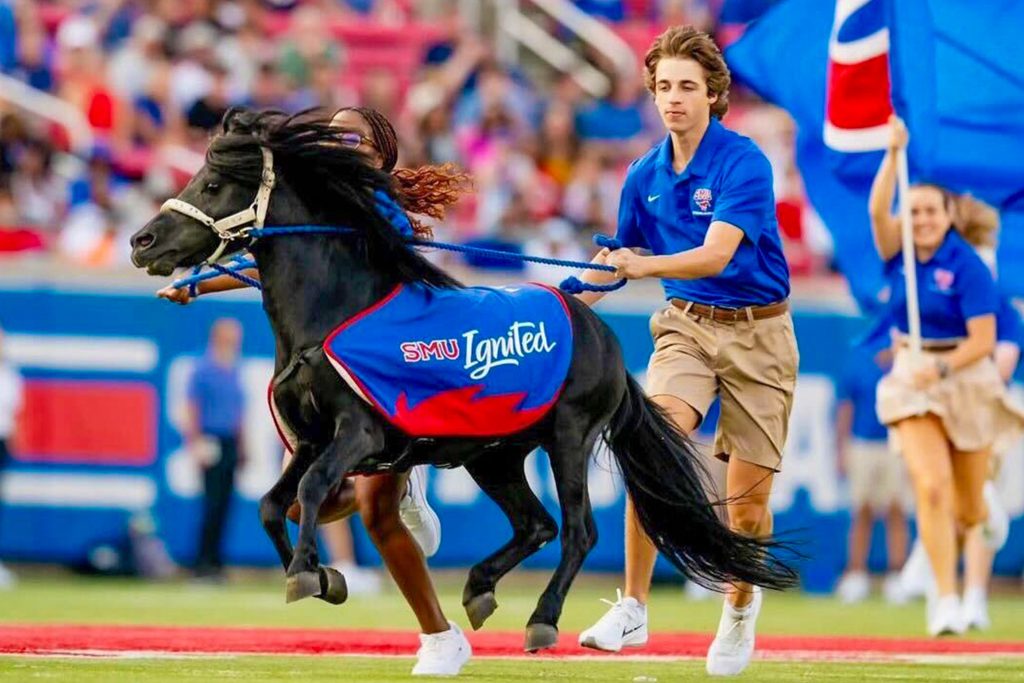
SMU: Peruna the ‘Mustang’
Ponies might be significantly smaller than mustangs, but that hasn’t stopped Southern Methodist University’s mascot, Peruna, the black Shetland pony, from bringing mustang-level horsepower to his alma mater. SMU’s athletic teams have been the Mustangs since 1917, but the live mascot didn’t debut until 1932 when the first Peruna — a feisty, 28-inch-tall pony — appeared at a pep rally.
Today, the ninth iteration of Peruna represents the Mustang spirit at every football game. He’s almost always accompanied by his costumed human counterpart (also named Peruna) and the official SMU fight song, which is also named “Peruna” in his honor.
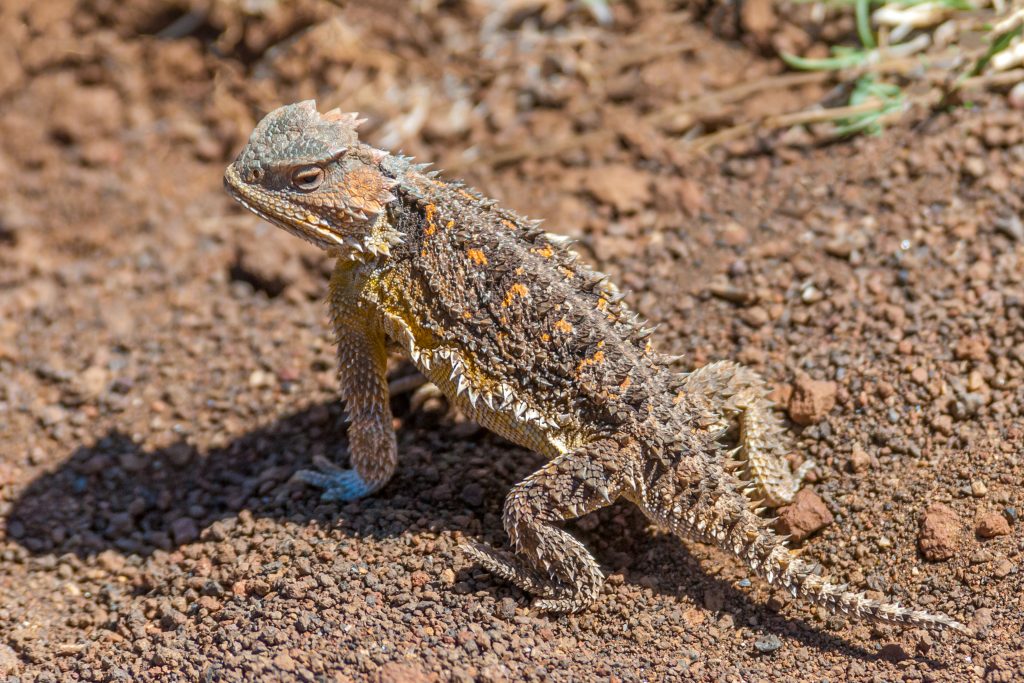
TCU: Horned Frogs
A spiky Southwestern lizard that spouts its blood out of its eyeballs to scare predators might not be your first choice for a college mascot, but it has been so for Texas Christian University since the 19th century. When TCU, known as AddRan Christian University at the time, started its football club in 1896, the field was allegedly crawling with horned frogs (which are actually lizards). The phenomenon led to the weird critter’s feature on the cover of TCU’s 1897–98 yearbook, and the school never looked back.
By the 1930s, a costumed Horned Frog mascot regularly showed up to football games to antagonize TCU’s rivals (without any eyeball blood). In 1979, it became the official mascot TCU knows and loves today, SuperFrog, who’s not only at every athletic event flashing his purple jersey but, on occasion, has been the life of the party at TCU alums’ weddings.
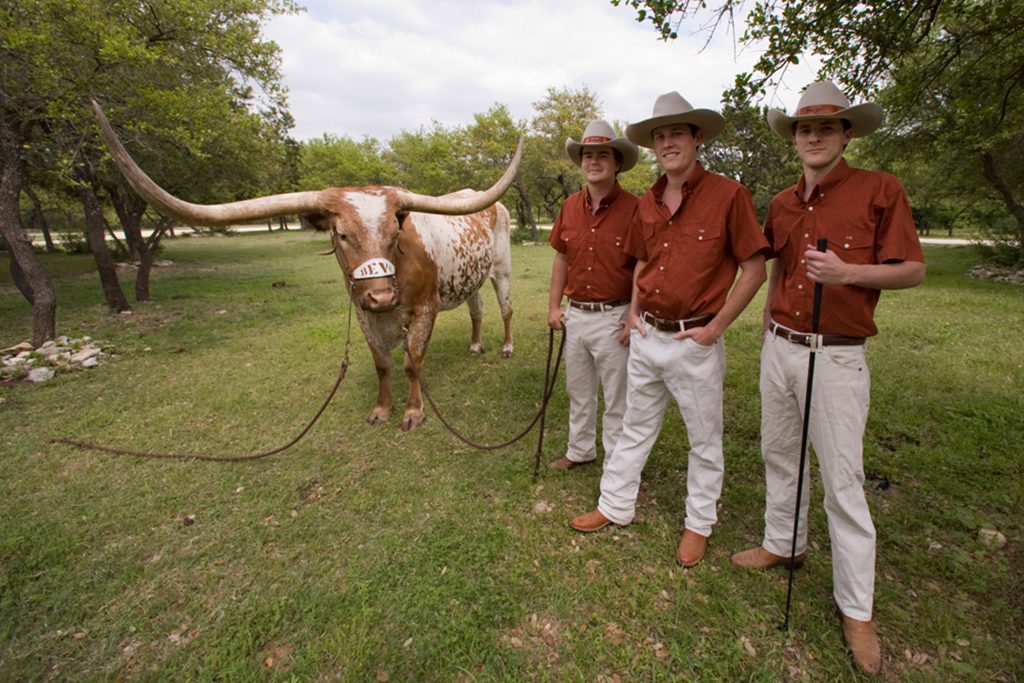
UT: Bevo the Texas Longhorn
What’s orange and white and more than 100 years old? Bevo, the Texas Longhorn steer, is the country’s largest live mascot and represents all the University of Texas at Austin athletes. UT’s athletic department first adopted the Longhorn as its symbol in 1903, but it wasn’t until 1916 that Bevo made his entrance. A group of alum collected $124 to purchase a steer from South Texas, shipped it via train to Austin, and brought it onto UT’s football field at halftime. The editor of the UT alum magazine started calling the giant, orange-spangled mascot Bevo — a name that many think is supposed to sound like “Beef-O.”
There have been 15 Bevos since the tradition began more than a century ago, and since then, the beefy college mascot hasn’t steered his famous football team wrong. Well, except for the occasional intercollegiate mishap over the years, such as Bevo V escaping during a football game and stampeding toward Baylor’s band or Bevo XV breaking loose to get at the University of Georgia’s bulldog mascot. But UT students and alums know that the beloved Bevo does it all with unbridled “Hook ’em Horns” spirit.
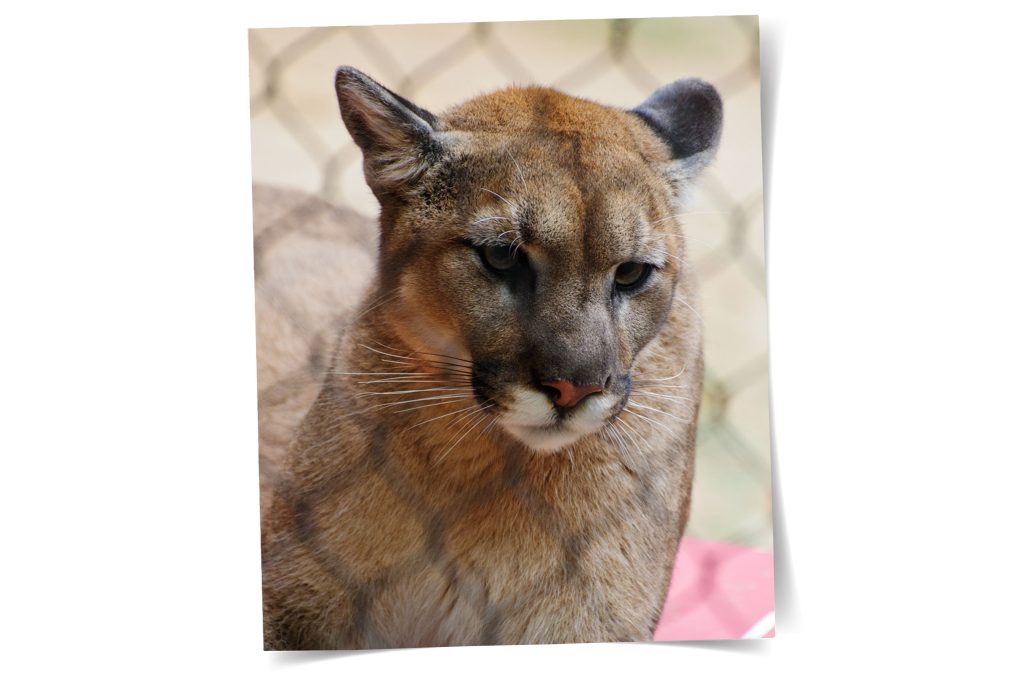
UH: Shasta the Cougar
The big cat became the University of Houston’s official college mascot in 1946. The following year, the cougar was not only official but became manifest: the Alpha Phi Omega fraternity purchased a female mountain lion from Mexico. “Shasta,” as in “she-has-to,” won the frat’s naming contest (because “Shasta have a cage, Shasta have a keeper, Shasta have a winning ball club, Shasta have the best”). Until 1989, four other live cougars took up the Shasta name and her duties of prowling the sidelines at every UH football game, home and away.
The tradition came to a close after the fifth Shasta passed away in 1989 and was replaced with a human mascot in a cougar costume — a tradition that persists until today. But in 2012, the spirit of Shasta was brought back to life through a UH alum partnership with the Houston Zoo with Shasta VI. Since then, two orphaned cougar cubs have been christened as Shasta VII and Louie and proudly represent the human Coogs as their college mascot.
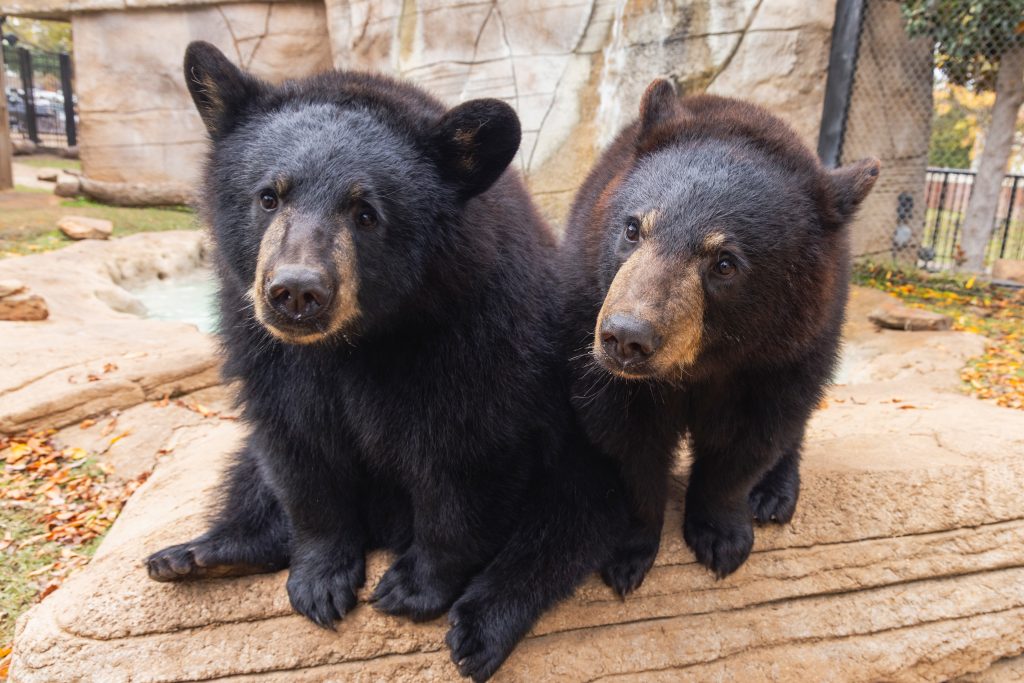
BU: Judges Belle and Indy the Bears
In 1914, Baylor University needed a mascot, so President Samuel Palmer Brooks turned to the student body and put the choice up for a vote. Some favorite contenders were a buffalo, antelope, frog, and even a ferret, but ultimately, the Baylor students chose the bear — specifically, an American black bear.
Three years later, the 107th Engineers, a unit of the 32nd Infantry Division stationed over at Camp MacArthur, just so happened to have a bear named Ted that they made available for that season’s Baylor-Texas A&M game. Eventually, the unit was ordered to depart, but Ted remained — entrusted to the athletic department. Baylor discontinued the tradition of having live bears at football games in 2003, but you can visit the two newest Baylor bears, Judge Belle and Judge Indy, at the on-campus Bill and Eva Williams Bear Habitat.
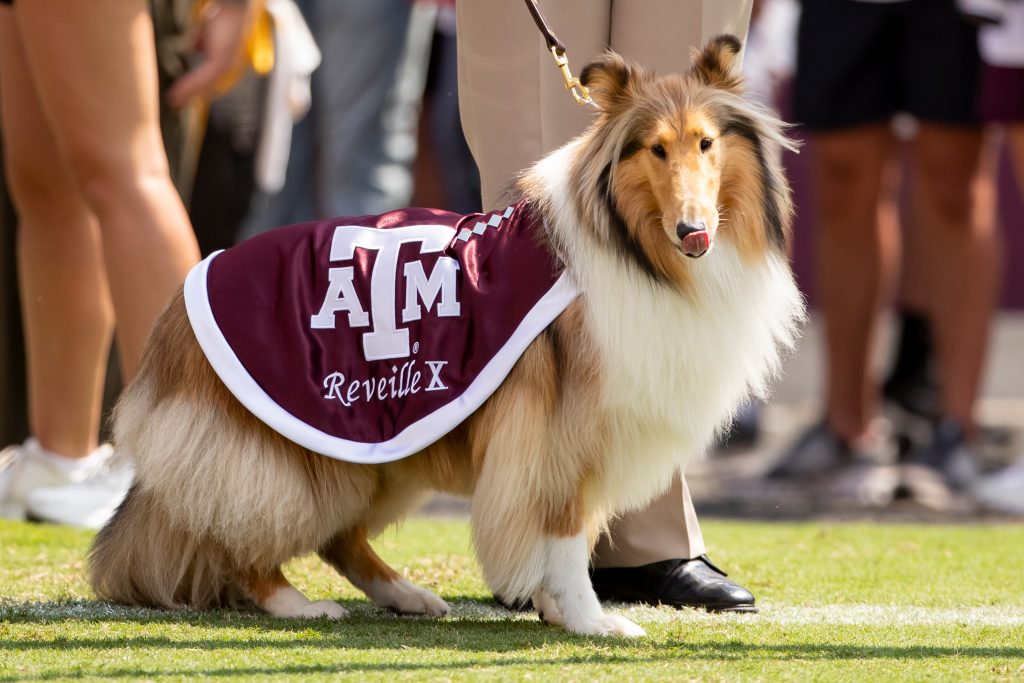
Texas A&M: Reveille the Collie
Many universities have live mascots that attend football games and campus events, but we only know of one school whose mascot attends class. Welcome to Texas A&M, home of Reveille, the Rough Collie known as “the First Lady of Aggieland.” Legend says that if Reveille barks during class, the professor may respond with, “Class dismissed.”
Reveille’s journey to become the school’s mascot had a rough start. In the early 1930s, a group of cadets driving back to campus accidentally hit a small black and white dog. Concerned for its wellbeing, they took the dog back to their dorm, doing their best to keep her hidden since pets weren’t allowed on campus. That was until early the following day when a bugler played “Reveille,” and the dog started barking loudly, thus earning her name. Reveille I died in 1944 and received a formal military burial at Kyle Field. Currently, Reveille X, who assumed her mascot duties in May of 2021, can be seen carrying on the school’s traditions, including leading the Fightin’ Texas Aggie Band onto the field at home games in College Station.
Learn more about Texas’ college traditions here.
© 2024 Texas Farm Bureau Insurance



